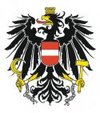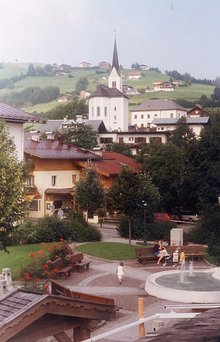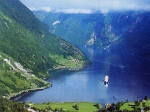
 The Republic of Austria ( German Republik Österreich) is a landlocked country in Central Europe . It borders Germany and the Czech Republic to the north, Slovakia and Hungary to the east, Slovenia and Italy to the south, and Switzerland and Liechtenstein to the west. The state is a representative democracy governed in accordance with principles of Parliamentarism .
The Republic of Austria ( German Republik Österreich) is a landlocked country in Central Europe . It borders Germany and the Czech Republic to the north, Slovakia and Hungary to the east, Slovenia and Italy to the south, and Switzerland and Liechtenstein to the west. The state is a representative democracy governed in accordance with principles of Parliamentarism .
Geography
Around 60 percent of Austria is mountainous due to its location in the Central Eastern Alps , which can be subdivided into the Tirolean Alps , the High and Low Tauern , Northern Limestone Alps , Southern Limestone Alps , and the Wienerwald .
The Five Regions of Austria
- Austrian granite plateau , located in the central mountainous area of the Bohemian Mass (8500 km², 10.1% of the total area)
- Austrian portion of foothills of the Alps and the Carpathians (9500 km², 12.3%)
- Austrian portion of the Alps (52600 km², 62.8%)
- Austrian portion of the Viennese basin (3700 km², 4.4%)
- Foothills in the east, Austrian area around the periphery of the Pannoni low country . (9500 km², 12.3%)
Out of the total area of Austria (84,000 km²) only about a quarter can be considered low lying, and only 32 percent of the country is below 500 metres.
Economy
 Austria, with its well-developed market economy and high standard of living , is closely tied to other European Union economies, especially Germany's. Membership in the EU has drawn an influx of foreign investors attracted by Austria's access to the single European market and proximity to EU aspirant economies. Slow growth in Germany and elsewhere in the world affected Austria, slowing its growth to 1.2% in 2001 . To meet increased competition from both EU and Central European countries, Austria will need to emphasize knowledge-based sectors of the economy, continue to deregulate the service sector , and lower its tax burden.
Austria, with its well-developed market economy and high standard of living , is closely tied to other European Union economies, especially Germany's. Membership in the EU has drawn an influx of foreign investors attracted by Austria's access to the single European market and proximity to EU aspirant economies. Slow growth in Germany and elsewhere in the world affected Austria, slowing its growth to 1.2% in 2001 . To meet increased competition from both EU and Central European countries, Austria will need to emphasize knowledge-based sectors of the economy, continue to deregulate the service sector , and lower its tax burden.
Demographics
The issue of Austrian nationality and ethnicity was throughout recent centuries and remains to this days a sensitive issue and a topic of dispute. Before the end of the Second World War, most of Austria's population were clearly self-identified ethnic-Germans, who considered themselves part of a larger German Volk (ethnic nation), together with the other German-speaking-populations of Europe. A distinct Austrian national identity has emerged since the mid-twentieth century and most Austrians now no longer identify themselves as "Germans". In modern Austria only a small minority of population, mostly but not entirely people with conservative or far right political views, advocate a pan-German ethnic identity for German-speaking Austrians.
Austrians of Germanic descent, by far the country's largest ethnic group, form between 85% and 89% of Austria's population. Around ten percent of Austria's people are of non-Austrian descent, many from surrounding countries, especially from the former East Bloc nations. The Austrian federal states of Carinthia and Styria are home to a significant (indigenous) Slovenian minority with around 18,000 members. So-called guest workers (Gastarbeiter) and their descendants also form an important minority group in Austria.
The official language, German , is spoken by almost all residents of the country. Austria's mountainous terrain lead to the development of many distinct German dialects. All of the dialects in the country, however, belong to Austro-Bavarian groups of German dialects, with the exception of the dialect spoken in its west-most Bundesland, Vorarlberg , which belongs to the group of Alemannic dialects.
There is also a distinct grammatical standard for Austrian German with a few differences to the German spoken in Germany.




